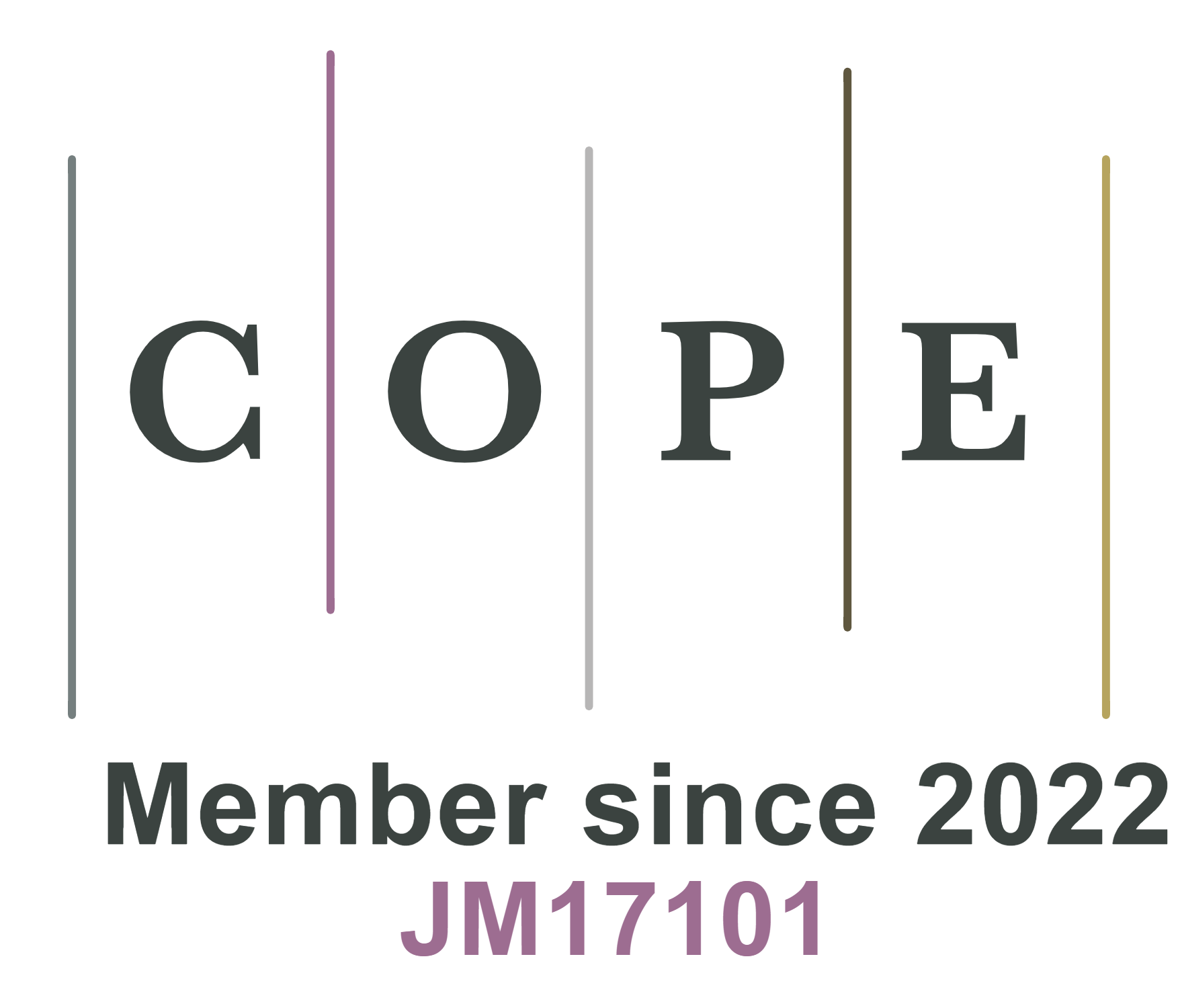Electronic modification of NaCrO2via Ni2+ substitution as efficient cathode for sodium-ion batteries
Abstract
The feature of high theoretical capacity, long thermal stability, and low-cost fabrication offers the layered transition metal oxide NaCrO2 as an excellent candidate for sodium-ion batteries. Here, we show an effective method for electronic modulation of NaCrO2 by partial substitution of Cr3+ with low-valent Ni2+ to produce NaCr0.95Ni0.05O2 as an efficient cathode for these batteries. We found that Ni2+ substitution plays a critical role in the ionic character of transition metal-oxygen bonds, which increases the interlayer separation and thus improves sodium-ion diffusion kinetics. Furthermore, Ni2+ substitution reduces the deterioration of NaCrO2 throughout charge-discharge processes and thus boosts the cycle performance of the materials. The resultant NaCr0.95Ni0.05O2 cathode displays a remarkable rate performance with specific capacities of 91.2 mAh g-1 at 50 C and a high retention (~80%) of the initial capacity after cycling for 1,000 cycles at 10 C.
Keywords
INTRODUCTION
The emergence of sodium-ion batteries (SIBs) requires efficient and stable cathodes[1,2]. Amongst the most investigated cathodic materials, layered transition metal (TM) oxides have attracted significant attention because of their low-cost synthesis and high theoretical specific capacity[3-6]. For example, NaCrO2 (coded as NCO) has been intensively studied assignable to its flat discharge curves and strong temperature adaptability[7,8]. It is also a well-established cathode material with a capacity of ~120 mAh g-1[9,10]. Nevertheless, the material suffers from a rapid capacity decay at high rate during recycling due to a low Na+ diffusivity. Additionally, its crystal structure can be damaged during the repeated (de)intercalation of sodium ions, which leads to an irreversible strain accumulation and the fading of the capacity[11].
Different methods such as carbon encapsulation[10,12], morphology control[13,14] and cation substitution[15] have been reported to demolish these obstacles for NCO. Among them, cation substitution has been considered one of the most effective and facile ways to enhance cycling stability and rate capability[16-18]. Cationic substitution refers primarily to replacing parts of TM ions with others. For instance, a delayed phase transition of O3-P3 was observed in the Ti-substituted NCO which achieved a specific discharge capacity of 96.7 mAh g-1 at a discharge rate of 1 C and a high capacity retention (~80% after 800 cycles)[19]. Furthermore, Lee et al. proposed a co-substitution strategy to reinforce the structural stability of the NCO, allowing the cathode to deliver a high-rate performance (> 20 C) and a long cycle life (> 1,000 cycles)[20]. Following this line, it was found that a substitution of Cr with Sb in NCO could expand the Na+ transmission channels[21]. Despite these notable advancements, the impact of low-valent TM substitution on electronic structure of layered oxides for SIBs and its subsequent effect on performance improvement have yet to be thoroughly investigated.
Here, we show an effective method to improve comprehensive performance of NCO by Ni2+ substitution. The substitution of Cr3+ by low-valent Ni2+ to produce NaCr0.95Ni0.05O2 influences the ionic character of the TM-oxygen bonds, which, in turn, increases the interlayer spacing of sodium layers to improve the diffusion kinetics of sodium ions. In addition, Ni2+ substitution inhibits the structural degradation of NCO during charge-discharge cycling, which effectively enhances the cycling performance of the material. Consequently, the NaCr0.95Ni0.05O2 exhibits an impressive performance of a remarkable rate performance with 91.2 mAh g-1 at 50 C and a high retention (80%) of the initial capacity after cycling for 1,000 cycles at 10 C.
RESULTS AND DISCUSSION
The control sample NCO and its derivative NaCr1-xNixO2 with different Ni contents (x = 0.03, 0.05, 0.07, noted as NCNO-x, respectively, in which x represents the moles of Ni2+ substitution to Cr3+) were synthesized via the solid-phase method[22]. The X-ray diffraction (XRD) patterns in Figure 1A and Supplementary Figure 1 confirm the rhombohedral layered phase for NCO, NCNO-0.03, and NCNO-0.05[14]. An impure phase NiO (marked with asterisk) appears in the NCNO-0.07, which is due to excessive doping of Ni2+[23]. The XRD peaks at 16.65° and 41.70° can be ascribed to the (003) and (104) crystal faces of Rinem
Figure 1. XRD patterns of (A) synthesized samples and the magnified diffraction peaks for the (003) and the (104) planes. SEM images of (B) the NCO and (C) the NCNO-0.05 samples. HRTEM images of (D) the NCO and (E) NCNO-0.05 samples.
Figure 1B and C presents scanning electron microscopy (SEM) images of the corresponding samples featuring micro-particles with an inconsistent configuration. We used the Nano Measurer software to statistically analyze the size distribution of particles. Particle size distribution analysis
Figure 1D and E presents the high-resolution transmission electron microscopy (HRTEM) characterization on the NCO and NCNO-0.05 samples, respectively. The original images have been included in Supplementary Figure 5. After Ni2+-substitution, the fringe spacing corresponding to the (003) plane increases from 0.53 to 0.55 nm for the NCNO-0.05 sample, which belongs to the Rinm phase of O3-type layered metal oxide. The wider interlayer distance is beneficial to the faster kinetic[19,27]. Therefore, introduction of Ni2+ leads to local adjustment and optimization of the lattice structure, making the lattice more favorable for the accommodation and diffusion of sodium ions.
We further carried out electronic localization function (ELF) calculations to rationalize the influence of Ni substitution onto the electronic structures of samples. Figure 2A illustrates the ELF map of valence electrons at the slices along the (001) plane for the NCO and NCNO-0.05 samples. The value in the two-dimensional ELF slice along (001) surface is in the range between 0 and 1. The value of 1 in red region indicates a complete localization, while that of 0.5 in green region corresponds to a delocalized electron gas. In short, a big ELF value indicates a strong localization of electrons. Therefore, in the ELF profile, compared with those in the NCO sample, the NCNO-0.05 sample shows an easily distinguished electron localization in the O-Cr coordination. This result indicates this bond has a more ionic character within the NCNO-0.05 sample than within NCO[28]. This could be ascribed to the fact that the Cr3+ ion has a higher coordination capacity than the Ni2+ due to the existence of empty 3d orbitals. In addition, enrichment of electrons between Cr-O could reduce the electrostatic interaction between the electrons and the sodium ions in the interlayer, which favors the diffusion of Na+[29,30]. This deduction can be explored by the accumulation of electrons on the O atoms to enhance the repulsion between O-O bonds. Previous reports have indicated that an enhancement of the ionic character of the TM-O bond can destabilize the P3 phase by sharing faces between NaO6 and TMO6 polyhedra in the layered crystal, thus promoting a reversible transition from the O3 to P3 phase[31,32].
Figure 2. (A) The electron localization function of valence electrons at the slices along the (001) plane of NCO and NCNO-0.05 samples. (B) The Cr 2p XPS spectra of the as-obtained NCO and NCNO-0.05 samples. (C) Ni 2p XPS spectra of NCNO-0.05.
We further carried out X-ray photoelectron spectroscopy (XPS) measurements to examine the chemical states of interested elements in samples. Figure 2B presents the Cr 2p3/2 XPS signal in which the peaks at binding energies of about 575.1 and 576.2 eV can be ascribed to the Cr2+ and Cr3+ species[33]. Compared to the NCO sample, the content of Cr2+ in the NCNO sample increases from 15.8% to 18.4% for the
Several coin-type cells (CR2032) were assembled with the NaCrxNi1-xO2 samples of various Ni-contents in order to study their performance in a voltage range from 2.0 to 3.6 V (vs. Na+/Na). Figure 3A and Supplementary Figure 9 compare the first curves of charging and discharging processes at 0.2 C for the NCO, NCNO-0.03, NCNO-0.05, and NCNO-0.07 samples. We noticed that the initial discharge capacity increases as the Ni2+ content in the samples rises up to 5%. Considering that the NCNO-0.05 sample has the best performance in terms of specific capacity, we then chose this composition for further detailed investigations. The NCNO-0.05 sample achieved a discharge capacity of 120.3 mAh g-1 at a rate of 0.2 C, which is higher than the NCO electrode (116.0 mAh g-1). The coulombic efficiency (CE) of the first charge-discharge procedure for the NCNO-0.05 electrode (97.7%) is also higher than that of the NCO electrode (95.6%). The enhancement in initial charge-discharge capacity of NCNO-0.05 is closely associated with the reversible insertion and extraction of sodium ions, as evidenced by the higher Coulombic efficiency. The air stability of NCO and NCNO-0.05 was compared by exposing them to air for 12 h. As shown in the Supplementary Figure 10, NCO displayed a capacity degradation of 2.9 mAh g-1, while NCNO-0.05 showed a slightly higher degradation of 3.3 mAh g-1 due to its larger interlayer spacing that facilitates H2O molecule insertion[43].
Figure 3. (A) The charge/discharge profiles of CR2032 type coin cells assembled with the prepared the NCO and NCNO-0.05 samples as the working electrode and Na metal as the counter electrode. The charge/discharge rate is 0.2 C. (B) The rate behaviors of CR2032 type coin cells. (C) The cyclic voltammogram curves of the NCO and the NCNO-0.05 electrodes at the first cycle at a scan rate of
Figure 3B compares the rate behavior of the NCO and NCNO-0.05 electrodes. At a discharge rate of 50 C, the NCNO-0.05 electrode retained a capacity of 91.2 mAh g-1, while the NCO electrode presented a much lower capacity (45.3 mAh g-1). After the discharge rate was set back to 0.2 C, the capacities of the
Figure 3C shows the cyclic voltammetry (CV) curves for the first charging cycle at a sweep rate of
Figure 4A shows the cycling stability for the prepared samples. The discharge capacities of the NCO and NCNO-0.05 electrodes at a rate of 10 C after 500 cycles were retained to 50.4 and 89.4 mAh g-1, with the capacity retentions of 52% and 88%, respectively. After 1,000 cycles at a rate of 10 C, the NCNO-0.05 sample showed a discharge capacity of 81 mAh g-1, higher than the NCO electrode of a corresponding capacity of 39.1 mAh g-1. The capacity retention was 80% for the NCNO-0.05 and 40% for the NCO electrode. The capacity loss ratio at a rate of 10 C corresponding to each cycle was 0.060% and 0.021% for the NCO and NCNO-0.05 electrodes, respectively. The rate capability and cycle performance of NaCr0.95Ni0.05O2 are higher than those of Na0.88Cr0.88Ru0.12O2 (83.6 mAh g-1 at 50 C) and Na0.9Ca0.05CrO2 (50 mAh g-1 at 20 C) (see Supplementary Table 4). Supplementary Table 4 compares the electrochemical properties of NCO-based cathodes.
Figure 4. (A) The cycling performances of CR2032 type coin cells at a rate of 10 C. Charge-discharge profiles of (B) NCO and (C) NCNO-0.05 at 5 C. XRD patterns for the (003) of the (D) NCO and (E) NCNO after 0, 10th, and 100th cycles.
We further reduced the current density to 5 C in order to observe in more detail the performance of the electrode materials [Figure 4B and C]. The cycling performance comparison underscores the superiority of the NCNO-0.05 electrode, which maintains the capacity retention of 91.6% after 100 cycles at 5 C [Figure 4C], far surpassing the 75.4% retention demonstrated by the NCO electrode [Figure 4B]. In addition, the NCO electrode experienced severe voltage decay during cycling as indicated by the slanted arrows in Figure 4B, which could be related to the structural degradation of the material. In contrast, the capacity of NCNO-0.05 is well preserved after cycles.
To verify the structural stability of the NCO and NCNO-0.05 electrodes after different cycles (with a state of charge, SOC = 0%), we further characterized them using XRD. Figure 4D and E presents the results of XRD characterization of the (003) phase. The whole XRD pattern is shown in Supplementary Figure 12. Along with a decrease in diffraction peak intensity, the XRD signal peak for the NCO sample at the (003) phase showed a distinct shift to a lower angle after 100 cycles of sodium-ion intercalation/deintercalation. It suggests that the layered structure has introduced more stacking faults due to repeated volume changes of lattice[47,51]. On the contrary, the XRD signal for the (003) phases of the NCNO-0.05 electrode is well preserved even after 100 cycles. This result verifies the improved stabilization of the O3 structure by Ni2+ substitution, which correlates to a highly reversible sodium-ion intercalation/deintercalation for this sample. In short, the highly stable material structure and reversible electrochemical reaction guarantee a long cycle life of Ni2+-substituted NCO.
CONCLUSIONS
In summary, we propose NaCr0.95Ni0.05O2 as a promising cathode for high-efficiency SIBs. The chemical substitution of Cr3+ by low-valent Ni2+ in NCO can be an attractive method to simultaneously expand the sodium-ion diffusion channel and stabilize the structure during Na+ (de)intercalation. The NaCr0.95Ni0.05O2 has achieved a high capacity (120.3 mA h g-1 at 0.2 C), rate performance (91.2 mA h g-1 at 50 C), and outstanding long cyclic life (80% after 1,000 cycles at 10 C). Moreover, our research suggests that Ni2+ substitution strategies can be extended to other Na-layered oxides. By optimizing the ionic of the TM-O bonds, the properties of layered oxide cathodes can be tailored for improved electrochemical performance.
EXPERIMENTAL
A solid phase reaction was used to synthesize NaCr1-xNixO2 (x = 0, 0.03, 0.05, 0.07). A slight excess of
The details about material characterization and electrochemical characterization of the samples are given in the supporting information.
DECLARATIONS
Authors’ contributions
Investigation, writing-original draft: Cai J
Investigation: Zhu Y, Zhang J, Tian L, Gao P, Zhang Y
DFT calculation: Zhang Z
Supervision, writing - review & editing: Shen Y
Writing - review & editing: Wang M
Availability of data and materials
The data that support the findings of this study are available from the corresponding author upon reasonable request.
Financial support and sponsorship
This work was financially supported by the National Key Research and Development Program of China (2022YFB3803600) and National Natural Science Foundation of China (22372065). We extend our gratitude to Engineer Jun Su from the Center of Optoelectronic Micro&Nano Fabrication and Characterizing Facility, WNLO of HUST, for assistance with the SEM and TEM tests. The authors also gratefully acknowledge HUST′s analysis and testing center and its WNLO Nano Characterization and Device Center (CNCD) for measurement.
Conflicts of interest
All authors declared that there are no conflicts of interest.
Ethical approval and consent to participate
Not applicable.
Consent for publication
Not applicable.
Copyright
© The Author(s) 2024.
Supplementary Materials
REFERENCES
1. Huang Y, Zheng Y, Li X, et al. Electrode materials of sodium-ion batteries toward practical application. ACS Energy Lett 2018;3:1604-12.
2. Eng AYS, Soni CB, Lum Y, et al. Theory-guided experimental design in battery materials research. Sci Adv 2022;8:eabm2422.
3. Du M, Du K, Guo J, et al. Direct reuse of oxide scrap from retired lithium-ion batteries: advanced cathode materials for sodium-ion batteries. Rare Met 2023;42:1603-13.
4. Huang Z, Zhang X, Zhao X, et al. Hollow Na0.62K0.05Mn0.7Ni0.2Co0.1O2 polyhedra with exposed stable {001} facets and K riveting for sodium-ion batteries. Sci China Mater 2023;66:79-87.
5. Huang Z, Zhang X, Zhao X, et al. Suppressing oxygen redox in layered oxide cathode of sodium-ion batteries with ribbon superstructure and solid-solution behavior. J Mater Sci Technol 2023;160:9-17.
6. Komaba S, Murata W, Ishikawa T, et al. Electrochemical Na insertion and solid electrolyte interphase for hard-carbon electrodes and application to Na-ion batteries. Adv Funct Mater 2011;21:3859-67.
7. Kubota K, Ikeuchi I, Nakayama T, et al. New insight into structural evolution in layered NaCrO2 during electrochemical sodium extraction. J Phys Chem C 2015;119:166-75.
8. Xia X, Dahn JR. NaCrO2 is a fundamentally safe positive electrode material for sodium-ion batteries with liquid electrolytes. Electrochem Solid State Lett 2012;15:A1.
9. Yu C, Park J, Jung H, et al. NaCrO2 cathode for high-rate sodium-ion batteries. Energy Environ Sci 2015;8:2019-26.
10. Ikhe AB, Park WB, Manasi M, Ahn D, Sohn KS, Pyo M. Unprecedented cyclability and moisture durability of NaCrO2 sodium-ion battery cathode via simultaneous Al doping and Cr2O3 coating. ACS Appl Mater Interfaces 2023;15:14958-69.
11. Wable M, Bal B, Capraz ÖÖ. Probing electrochemical strain generation in sodium chromium oxide (NaCrO2) cathode in Na-ion batteries during charge/discharge. Energy Adv 2024;3:601-8.
12. Ding J, Zhou Y, Sun Q, Fu Z. Cycle performance improvement of NaCrO2 cathode by carbon coating for sodium ion batteries. Electrochem Commun 2012;22:85-8.
13. Liang L, Zhang W, Denis DK, et al. Comparative investigations of high-rate NaCrO2 cathodes towards wide-temperature-tolerant pouch-type Na-ion batteries from -15 to 55 °C: nanowires vs. bulk. J Mater Chem A 2019;7:11915-27.
14. Liang L, Sun X, Denis DK, et al. Ultralong layered NaCrO2 nanowires: a competitive wide-temperature-operating cathode for extraordinary high-rate sodium-ion batteries. ACS Appl Mater Interfaces 2019;11:4037-46.
15. Wang Y, Cui P, Zhu W, et al. Enhancing the electrochemical performance of an O3-NaCrO2 cathode in sodium-ion batteries by cation substitution. J Power Sources 2019;435:226760.
16. Li Y, Chen M, Liu B, Zhang Y, Liang X, Xia X. Heteroatom doping: an effective way to boost sodium ion storage. Adv Energy Mater 2020;10:2000927.
17. Li XL, Bao J, Li YF, et al. Boosting reversibility of Mn-based tunnel-structured cathode materials for sodium-ion batteries by magnesium substitution. Adv Sci 2021;8:2004448.
18. Xi K, Chu S, Zhang X, et al. A high-performance layered Cr-based cathode for sodium-ion batteries. Nano Energy 2020;67:104215.
19. Li W, Wang Y, Hu G, et al. Ti-doped NaCrO2 as cathode materials for sodium-ion batteries with excellent long cycle life. J Alloys Compd 2019;779:147-55.
20. Lee I, Oh G, Lee S, et al. Cationic and transition metal co-substitution strategy of O3-type NaCrO2 cathode for high-energy sodium-ion batteries. Energy Stor Mater 2021;41:183-95.
21. Xu H, Yan Q, Yao W, Lee C, Tang Y. Mainstream optimization strategies for cathode materials of sodium-ion batteries. Small Struct 2022;3:2100217.
22. Ko W, Cho M, Kang J, et al. Exceptionally increased reversible capacity of O3-type NaCrO2 cathode by preventing irreversible phase transition. Energy Stor Mater 2022;46:289-99.
23. Ma C, Li X, Yue X, Bao J, Luo R, Zhou Y. Suppressing O3-O’3 phase transition in NaCrO2 cathode enabling high rate capability for sodium-ion batteries by Sb substitution. Chem Eng J 2022;432:134305.
24. Wang Y, Yang Z, Qian Y, Gu L, Zhou H. New insights into improving rate performance of lithium-rich cathode material. Adv Mater 2015;27:3915-20.
25. Liu Y, Jiang W, Ling M, Fan X, Wang L, Liang C. Revealing lithium configuration in aged layered oxides for effective regeneration. ACS Appl Mater Interfaces 2023;15:9465-74.
26. Biasi L, Kondrakov AO, Geßwein H, Brezesinski T, Hartmann P, Janek J. Between scylla and charybdis: balancing among structural stability and energy density of layered NCM cathode materials for advanced lithium-ion batteries. J Phys Chem C 2017;121:26163-71.
27. Zhao C, Yao Z, Wang Q, et al. Revealing high Na-content P2-type layered oxides as advanced sodium-ion cathodes. J Am Chem Soc 2020;142:5742-50.
28. Zhai Y, Yang W, Ning D, et al. Improving the cycling and air-storage stability of LiNi0.8Co0.1Mn0.1O2 through integrated surface/interface/doping engineering. J Mater Chem A 2020;8:5234-45.
29. Feng J, Luo SH, Qian L, et al. Properties of the “Z”-phase in Mn-rich P2-Na0.67Ni0.1Mn0.8Fe0.1O2 as sodium-ion-battery cathodes. Small 2023;19:e2208005.
30. Wang H, Gao X, Zhang S, et al. High-entropy Na-deficient layered oxides for sodium-ion batteries. ACS Nano 2023;17:12530-43.
31. Wang PF, Xin H, Zuo TT, et al. An abnormal 3.7 volt O3-type sodium-ion battery cathode. Angew Chem Int Ed 2018;57:8178-83.
32. Sathiya M, Jacquet Q, Doublet M, Karakulina OM, Hadermann J, Tarascon J. A chemical approach to raise cell voltage and suppress phase transition in O3 sodium layered oxide electrodes. Adv Energy Mater 2018;8:1702599.
33. Chu S, Kim D, Choi G, et al. Revealing the origin of transition-metal migration in layered sodium-ion battery cathodes: random Na extraction and Na-free layer formation. Angew Chem Int Ed 2023;62:e202216174.
34. Wang PF, You Y, Yin YX, et al. Suppressing the P2-O2 phase transition of Na0.67Mn0.67Ni0.33O2 by magnesium substitution for improved sodium-ion batteries. Angew Chem Int Ed 2016;55:7445-9.
35. Zhou Y, Ding J, Nam K, et al. Phase transition behavior of NaCrO2 during sodium extraction studied by synchrotron-based X-ray diffraction and absorption spectroscopy. J Mater Chem A 2013;1:11130.
36. Ma Q, Chen Z, Zhong S, et al. Na-substitution induced oxygen vacancy achieving high transition metal capacity in commercial Li-rich cathode. Nano Energy 2021;81:105622.
37. Guo W, Zhang C, Zhang Y, et al. A universal strategy toward the precise regulation of initial coulombic efficiency of Li-rich Mn-based cathode materials. Adv Mater 2021;33:e2103173.
38. Lin C, Meng X, Liang M, et al. Facilitating reversible transition metal migration and expediting ion diffusivity via oxygen vacancies for high performance O3-type sodium layered oxide cathodes. J Mater Chem A 2022;11:68-76.
39. Wang W, He R, Wang Y, et al. Boosting methanol-mediated CO2 hydrogenation into aromatics by synergistically tailoring oxygen vacancy and acid site properties of multifunctional catalyst. Chemistry 2023;29:e202301135.
40. Cui SL, Zhang X, Wu XW, et al. Understanding the structure-performance relationship of lithium-rich cathode materials from an oxygen-vacancy perspective. ACS Appl Mater Interfaces 2020;12:47655-66.
41. Carey JJ, Legesse M, Nolan M. Low valence cation doping of bulk Cr2O3: charge compensation and oxygen vacancy formation. J Phys Chem C 2016;120:19160-74.
42. Moltved KA, Kepp KP. The chemical bond between transition metals and oxygen: electronegativity, d-orbital effects, and oxophilicity as descriptors of metal-oxygen interactions. J Phys Chem C 2019;123:18432-44.
43. Li H, Wang J, Xu S, et al. Universal design strategy for air-stable layered Na-ion cathodes toward sustainable energy storage. Adv Mater 2024;36:e2403073.
44. Hou P, Gong M, Tian Y, Li F. A new high-valence cation pillar within the Li layer of compositionally optimized Ni-rich
45. Wang Y, Feng Z, Cui P, et al. Pillar-beam structures prevent layered cathode materials from destructive phase transitions. Nat Commun 2021;12:13.
46. Wang S, Chen F, Zhu TY, et al. In situ-formed Cr2O3 Coating on NaCrO2 with improved sodium storage performance. ACS Appl Mater Interfaces 2020;12:44671-8.
47. Wang Y, Li W, Hu G, et al. Electrochemical performance of large-grained NaCrO2 cathode materials for Na-ion batteries synthesized by decomposition of Na2Cr2O7·2H2O. Chem Mater 2019;31:5214-23.
48. Konarov A, Choi JU, Bakenov Z, Myung S. Revisit of layered sodium manganese oxides: achievement of high energy by Ni incorporation. J Mater Chem A 2018;6:8558-67.
49. Luo K, Roberts MR, Hao R, et al. Charge-compensation in 3d-transition-metal-oxide intercalation cathodes through the generation of localized electron holes on oxygen. Nat Chem 2016;8:684-91.
50. Ding F, Zhao C, Xiao D, et al. Using high-entropy configuration strategy to design Na-ion layered oxide cathodes with superior electrochemical performance and thermal stability. J Am Chem Soc 2022;144:8286-95.
Cite This Article
How to Cite
Cai, J.; Zhu, Y.; Zhang, Z.; Zhang, J.; Tian, L.; Gao, P.; Zhang, Y.; Wang, M.; Shen, Y. Electronic modification of NaCrO2via Ni2+ substitution as efficient cathode for sodium-ion batteries. Energy Mater. 2024, 4, 400073. http://dx.doi.org/10.20517/energymater.2024.28
Download Citation
Export Citation File:
Type of Import
Tips on Downloading Citation
Citation Manager File Format
Type of Import
Direct Import: When the Direct Import option is selected (the default state), a dialogue box will give you the option to Save or Open the downloaded citation data. Choosing Open will either launch your citation manager or give you a choice of applications with which to use the metadata. The Save option saves the file locally for later use.
Indirect Import: When the Indirect Import option is selected, the metadata is displayed and may be copied and pasted as needed.




























Comments
Comments must be written in English. Spam, offensive content, impersonation, and private information will not be permitted. If any comment is reported and identified as inappropriate content by OAE staff, the comment will be removed without notice. If you have any queries or need any help, please contact us at support@oaepublish.com.